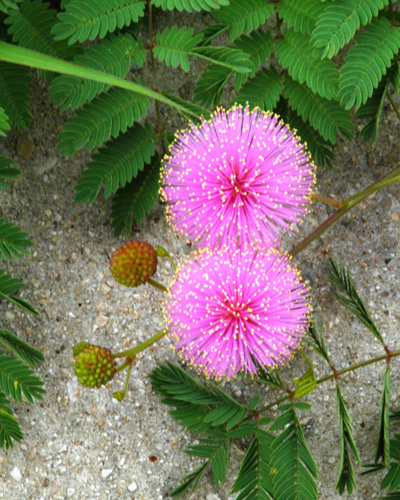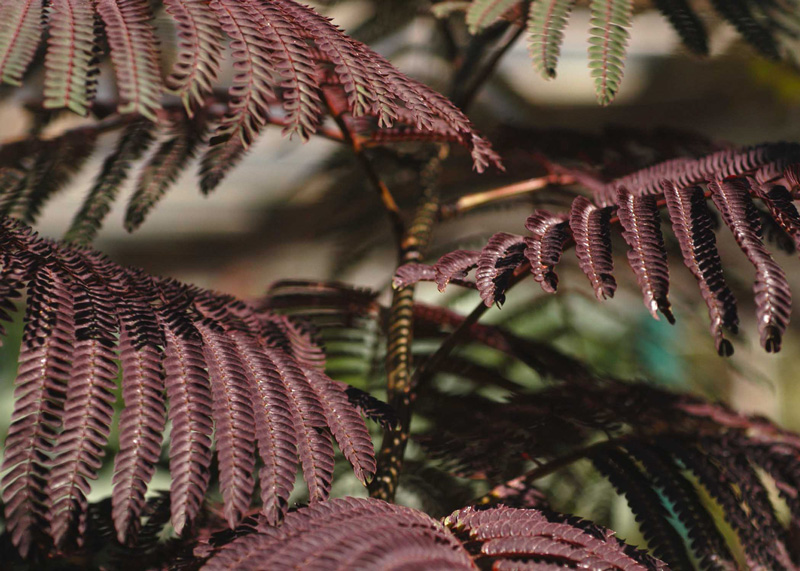Mimosa, or Silktree Albizzia
Let’s get that name thing out of the way first. There’s another plant that stakes claim to the scientific name “Mimosa,” and that’s Mimosa pudica.

You may have seen it growing in a bar ditch or pasture near you this spring and never thought twice about it. But ask an 8-year-old, and their teacher may have shown it to them in school.
Mimosa pudica is a little trailing beauty that goes by the common name of “sensitive briar.” It has powderpuff-pink flowers and leaves that fold up at night – and, more notably, when they’re touched gently by a child’s fingertip. That’s when the giggles ensue.
So, that’s the plant that’s earned the rights to call itself “mimosa.”
Now, on to the shade tree…
I’ll allow myself to keep calling this tree “mimosa” as well. After all, I have several friends I call “Mike” and several others I call “Mark.” I can have two friends called “Mimosa.” (I don’t drink, so two is my limit.)
It’s actually a lovely little accenting tree that was once very common in Texas. You’d see it in nurseries. I even grew it in my backyard nursery when I was landscape contracting in high school. But that was back when few of us knew any better and when mimosas were acceptable landscaping alternatives.
We had one in our backyard. So did the neighbors on either side, behind us and across the neighborhood park. I mowed yards around them, and I noticed how much they varied in color, from pale icy white-pink to deep rose, almost red. You could plant seeds from trees of known colors and have a slightly better chance of getting the color you wanted, but there were no guarantees.

The trees are vase-shaped, growing to 20 or 25 ft. tall and wide. They’re short-lived (25 to 35 years) and prone to several serious insect and disease problems, including mimosa wilt, cotton root rot, mimosa webworms and borers. Their cast-off flowers and seedpods are messy, and the trees are now considered invasive. “Other than that,” he said with a wry smile, “they’re great landscaping plants.”


